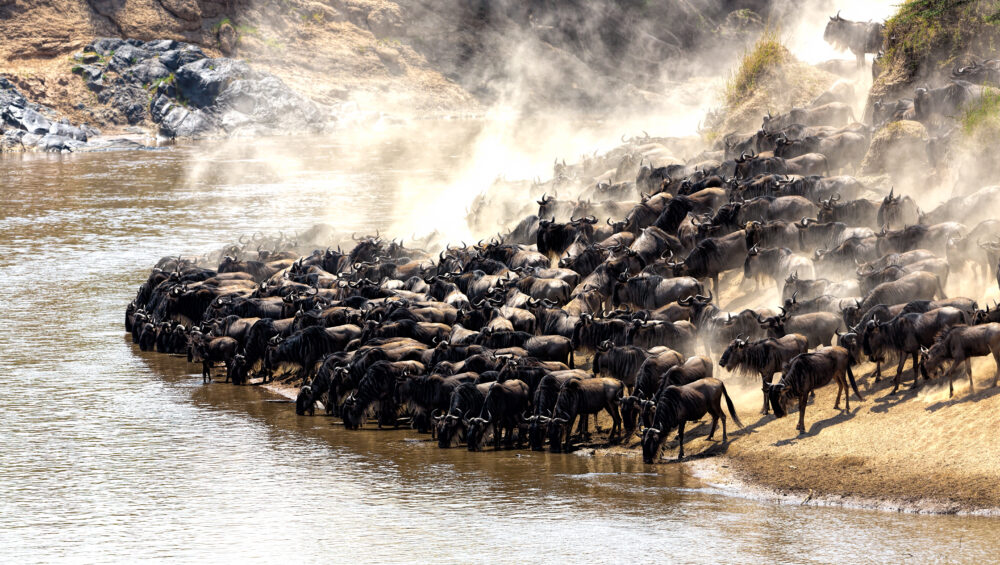The Great Migration is a remarkable annual spectacle involving millions of wildebeests journeying into Tanzania. This awe-inspiring event has unfolded for millennia and stands as the planet’s largest annual movement of animals. Serengeti National Park serves as the world-renowned stage for this grand procession, where herds of wildebeests, zebras, antelope, and other creatures undertake a perilous pilgrimage.
The Great Migration presents nature in its purest and most unadulterated form. As these animal herds traverse the vast African plains, cross treacherous rivers, and traverse breathtaking landscapes, you will find yourself utterly captivated by the sheer majesty of Africa.
It’s important to highlight that the Great Migration within Serengeti National Park occurs throughout the year, albeit in varying forms. Given its immense scale, you can encounter wildebeest herds in different regions of the park at various times.
Migration seasons of antelopes
November – January:
The Serengeti National Park’s mesmerizing migration cycle commences during this period as animals embark on their journey from Kenya’s Maasai Mara National Reserve to the southeastern reaches of the Serengeti. This coincides with Tanzania’s dry season, and approximately 1.7 million antelopes, accompanied by 260,000 zebras and 470,000 gazelles, traverse the Serengeti’s plains adorned with short grass. Notably, this time marks the mating season for zebras, a pivotal moment for the future of these species.
February – March:
In February, the migration progresses through the southern section of Serengeti National Park and the Ngorongoro Conservation Area. This phase marks the zenith of antelope fertility and holds great significance for the formation of the next generation. During this period, new antelopes come into the world, and visitors may witness these younglings walking alongside the herd, safeguarded from predators and demonstrating remarkable speed just days after birth.
By early March, the forage near the Ngorongoro becomes scarce, compelling antelopes to journey to the western expanse of the Serengeti, specifically the region around the Grumeti River.
April: The vast herds of animals make their way to the park’s central region known as Seronera. This period corresponds with Tanzania’s rainy season, featuring heavy and sustained rainfall that bestows animals with an abundance of fresh grass across tens of thousands of square kilometers.
May – June:
As the rainy season draws to a close, the antelope herds continue their westward migration to the area known as the Western Corridor. Along their route, they must traverse the Mbalageti and Grumeti rivers. National Geographic and Discovery Channel frequently organize expeditions to capture the riveting Grumeti River crossing, capturing the peril of herds surging through crocodile-infested waters. It’s a truly exhilarating spectacle to witness, surpassing any television episode.
July:
July signals the onset of Tanzania’s dry season, with no rainfall in sight. The animals persist in their northward journey, heading toward the Kenyan border via the Grumeti region. By the end of August, this astonishing migration reaches the borders of the monitored zones in Ikorongo, home to the renowned German Fort Ikoma, chronicled in Bernard Grzimek’s book “Serengeti Shall Not Die.”
August – October:
As September concludes, the migration reaches the Kenyan border. In October, amid the peak of the dry season, the majority of the animals complete their migration to Kenya’s Maasai Mara. Here, they find ample fresh water and abundant grass, making it an ideal destination during this period.


